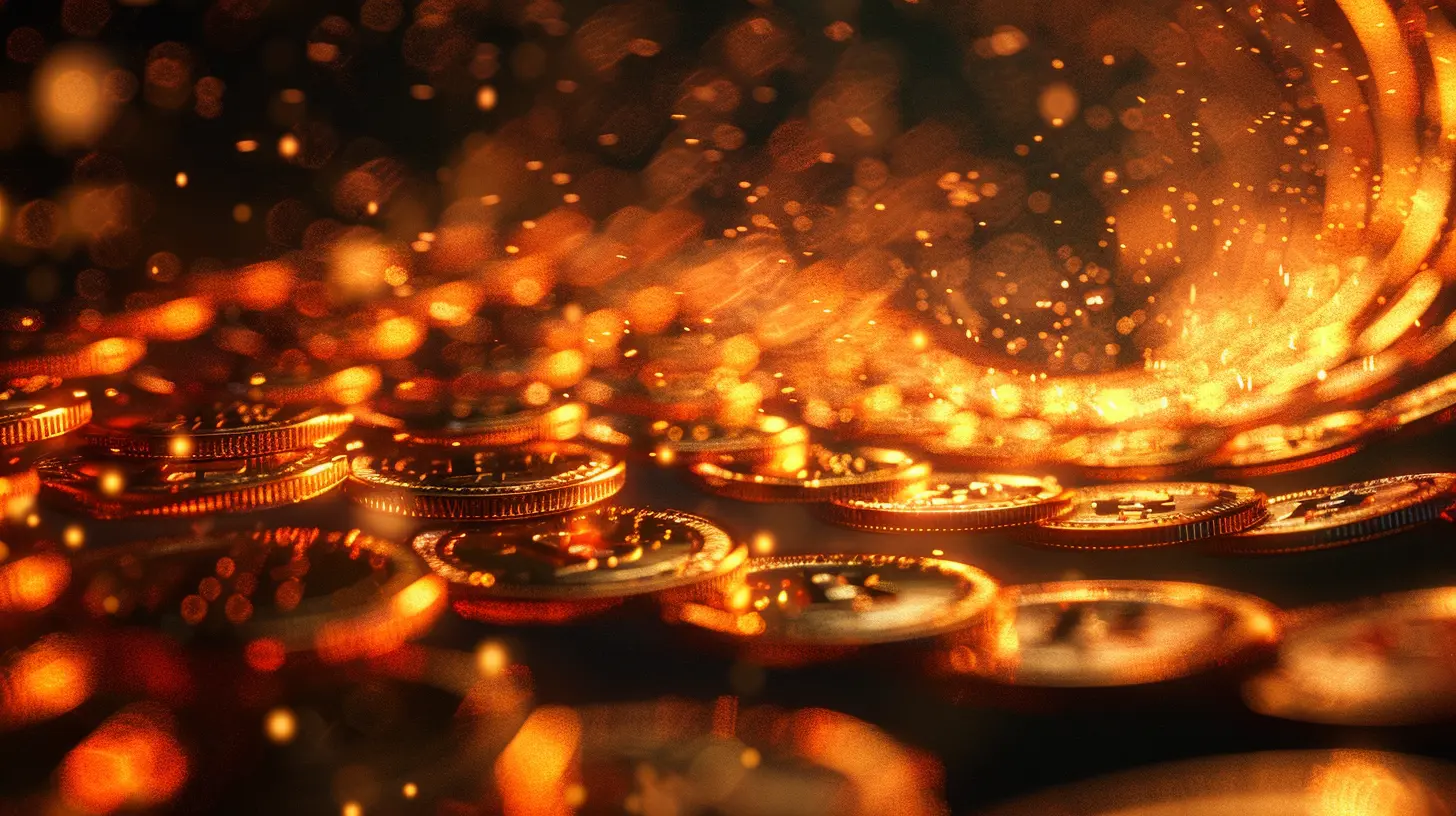Are We Heading Toward an Inflationary Spiral? Key Economic Insights
1 August 2025
Alright, let’s cut the economics jargon and talk turkey—because, honestly, if prices keep rising, turkey might be the only thing we can't afford come Thanksgiving. If you’ve been watching your grocery bills head north faster than a snowbird in December, you might’ve asked yourself: “Are we stuck in some kind of inflation vortex?”
Well, friend, grab your wallet and your sense of humor—we’re diving into the wild, weird, and wallet-thinning world of inflationary spirals. Is this a short-term blip or are we on a financial rollercoaster with no brakes and too much popcorn (which, by the way, also costs more now)?
Welcome aboard the good ship “Why is everything so dang expensive?”
What Is Inflation Anyway? (And No, It’s Not a New TikTok Trend)
Inflation is what happens when your dollar buys you less stuff over time. That $5 latte you grabbed last year? It’s now $6. Why? Because prices rise when demand increases or supply shrinks—or both.But inflation’s not all bad. A little bit? Totally normal. It’s like salt in your pasta water—enhances flavor if you don’t go overboard.
Now, an inflationary spiral? That’s when things start spinning out of control, like a toddler with a sugar rush and no nap. Prices go up, wages follow, then prices rise again because labor costs more—and round and round we go. It’s like playing economic Jenga with sweaty palms.
The Current Lay of the Land: Are Prices Actually Spiraling?
Let’s get one thing straight: We’re definitely seeing high inflation. Consumer prices have risen significantly over the last couple of years. Groceries? Up. Gas? Up. Rent? Yep, that too. Even eggs went full diva status for a while.But are we in a full-blown spiral? That’s a bigger (and messier) question.
Some Warning Signs:
- Wages Chasing Prices: Workers are (rightfully) asking for higher pay to match rising costs. This could fuel more inflation if companies hike prices to cover their payroll.- Sticky Inflation: Prices in some sectors aren’t coming down—even when supply chain issues ease.
- Expectations Are Rising: If people believe inflation is here to stay, they'll change how they spend—and this belief alone can keep inflation high. It’s like a self-fulfilling prophecy, only with fewer horoscopes and more economics.

Wait, Haven’t We Been Here Before?
Oh yes, we’ve danced this dance.Let’s hop in our economic time machine and flash back to the 1970s—bell bottoms, disco, and double-digit inflation. That era gave us a true inflationary spiral. Prices kept rising, the Fed kept raising interest rates, people kept panicking—and it took some hardcore financial pain to settle things down.
Back then, inflation was driven by oil shocks, wage contracts, and a whole lotta bad policy decisions. It wasn’t pretty. Think of it as a financial mullet—business in the front, chaos in the back.
So… Are We in a ’70s Redux?
Not quite. At least, not yet.Here’s What’s Different:
- Today’s Fed is On It (Mostly): The Federal Reserve has tools, like interest rate hikes, to cool things down. They’ve been hiking rates like they're on some kind of cardio kick.- Supply Chain Recovery: Global supply chains are slowly unwinding their COVID-era mess, which should ease some pressure.
- Consumers Are Still Spending: Despite higher prices, demand hasn’t totally crashed. That shows some resilience in the economy.
But the jury’s still out. If wages and prices keep leapfrogging each other in a game of economic tag, we might be heading into spiral territory. So, hold on to your spreadsheets.
Let’s Talk About Wages (A Hot Topic in Every Office Breakroom)
Wages have risen, and that’s great for workers who’ve been pinched for decades. But if companies pass those costs onto consumers, we could see price hikes continue. Then what? More wage demands. It’s a feedback loop that can trigger the dreaded inflationary spiral.It’s like playing Monopoly—when everyone gets more money, the prices of Boardwalk and Park Place don’t just stay the same. Nope, suddenly the whole game’s more expensive…and the banker is sweating.
The Fed’s Game Plan: Jack Up Those Interest Rates
To tame inflation, the Federal Reserve’s been steadily raising interest rates. Why? Because higher rates mean more expensive borrowing = less spending = less demand = lower prices (in theory).But here’s the kicker: raise rates too fast, and you risk triggering a recession. Raise them too slow? Inflation might party on. It’s a tightrope walk with a flaming unicycle and no safety net.
So far, the Fed’s done a decent job of slowing inflation without completely wrecking the economy. But hey—we’re all still nervously watching from the bleachers, popcorn in hand (if we can afford it).
The Global Side of Things: Inflation Isn’t Just an American Problem
News flash: Inflation’s making waves worldwide.- Europe? Dealing with energy prices and war-related disruptions.
- Developing countries? Battling currency devaluation and rising import costs.
- Your cousin in Canada? Yep, even maple syrup’s not immune.
It’s like inflation RSVP’d to every global economy’s dinner party—and brought uninvited guests like higher oil prices and supply shortages.
Signs That We Might Not Spiral Out
Okay, let’s not panic-click Zillow listings in Wyoming just yet. There are signs things could stabilize:1. Interest Rates Are Working: Inflation is slowing down in some areas.
2. Consumer Habits Are Shifting: People are being choosier with spending.
3. Technology = Efficiency: Automation and innovation can reduce costs over time.
We’re not totally out of the woods, but we might be seeing a trailhead. Cross your fingers and check your credit score.
What Should You Be Doing Right Now?
Look, unless you moonlight as the Chair of the Federal Reserve, there’s only so much you can control. But you can still make smart moves:1. Review Your Budget
Yes, it’s about as fun as watching paint dry, but knowing where your money’s going gives you power.2. Avoid High-Interest Debt
Credit card debt is the enemy during high inflation. It’s like fighting fire with gasoline. Just don’t.3. Invest in Yourself
Upskilling can lead to higher income. And if employers are paying more, you want to be at the front of that line, not the back.4. Diversify Those Investments
Stocks, bonds, real estate—don’t put all your eggs in one over-priced, inflation-ridden basket.5. Stay Informed
Economic trends can shift fast. Keep one eye on the news and the other on your wallet.The TL;DR of It All
Inflation? Yep, it’s here. An inflationary spiral? Maybe not yet—but the risk is real. So far, central banks are doing their best tightrope act, trying to balance growth and price stability. And while we’re not reliving the ’70s (no offense to polyester), the road ahead is bumpy.The good news? You’re not powerless. A little awareness, a splash of financial savvy, and a dash of humor can go a long way. After all, navigating the economy is a lot like surfing—it's all about riding the wave without wiping out.
So stay smart, stay flexible, and maybe hold off on that $7 oat milk latte (but only if you really want to).
all images in this post were generated using AI tools
Category:
Inflation ImpactAuthor:

Harlan Wallace
Discussion
rate this article
1 comments
Shannon Oliver
In the dance of dollars, shadows loom, Inflation whispers, casting gloom. Yet through the chaos, wisdom glows, Navigating tides where uncertainty flows. Watch closely, for truth softly shows.
August 28, 2025 at 4:46 AM

Harlan Wallace
Thank you for your insightful reflection! Indeed, navigating the complexities of inflation requires both vigilance and wisdom.


